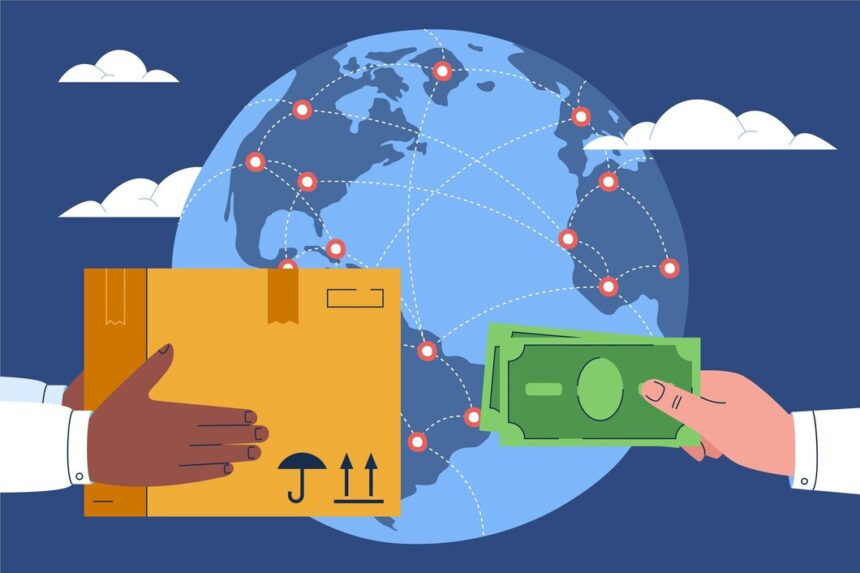As a bank, you have to facilitate international transactions for your customers. while ensuring their funds reach their intended source destinations efficiently.
Currency exchange influences every aspect of cross-border transactions. It influences the costs, the efficiency, and even the transparency of transactions.
As a bank, you need to master the dynamics of currency exchange. It allows you to offer better services, reduce risks, and enhance the customer experience. Currency exchange can change quickly. Staying informed helps you handle money across different countries more easily.
This guide explains the essentials of currency exchange so you can easily understand the complexities of cross-border payments.
Let’s get started with understanding what is currency exchange in cross-border payments.
What is a currency exchange in cross-border payments?
Currency exchange in cross-border payments can be broadly explained as the process of converting one currency into another. When your customers send money internationally, their local currency must convert into their recipient’s currency.
This step ensures the recipient can use the funds without additional inconvenience.
For example, If a customer wants to send money from India to one of his family members who stays in the USA, then his would be converting from Indian rupees to American dollars.
Methods of currency conversion
There are several ways to manage currency exchange during cross-border transactions.
Each method offers unique advantages.
Spot exchange rates
This method involves converting currency at the current market rate. Spot rates are ideal for immediate transfers. They are further offering simplicity and speed. However, they may expose you to market volatility.
Forward contracts
A forward contract is a financial instrument, that enables to exchange of currencies at a predetermined rate on a specific future date. It will allow you to lock in an exchange rate today for a transaction that will occur later.
This method allows you to lock in the rate for a future transaction. Forward contracts help you eliminate the risk associated with rate fluctuations.
Multi-currency accounts
These accounts enable you to hold and manage multiple currencies simultaneously. They simplify cross-border transactions and reduce conversion fees.
How do exchange rates work for banks?
Currency exchange comes with costs, such as conversion fees and margins. These costs affect the final amount your customers receive or pay during cross-border transactions via an international remittance solution.
The process works as follows:
Determine the exchange rate
You must determine the prevailing exchange rate for the currencies used in the transaction. The rate depends on market conditions and the pricing model of the rate provider.
Add a margin
To add a margin, you adjust the exchange rate slightly in your favor. This difference between the market rate and the rate you offer covers your operational costs and protects you from market risks.
For example, if the market rate is 1 USD = 0.85 EUR, the provider might adjust it to 1 USD = 0.83 EUR to account for the margin.
Apply conversion fees
You can charge a fixed or percentage-based conversion fee. This fee helps cover the administrative effort required to process the transaction.
Calculate the final amount
After adding the margin and conversion fee, you determine the final amount in the recipient’s currency. Clear and accurate calculations help you maintain trust with your customers.
Explain the costs to customers
You must provide a detailed overview of the exchange rate, margin, and any additional fees. Explaining these details ensures transparency and strengthens your relationship with customers.
Understanding the costs of currency exchange
Currency exchange comes with several costs that affect both the sender and the recipient. Understanding these costs allows you to offer transparent and competitive services to your customers.
Fees and margins in currency exchange
You must account for the exchange margin and conversion fees when converting currency. The margin shows the difference between the market rate and the rate you offer, which ensures your bank remains profitable.
Conversion fees add to the total cost of a transfer. They can be a flat rate or a percentage of the amount that your customer sends.
The role of technology in currency exchange
Technology plays an essential role in modern currency exchange, It helps you streamline processes, reduce errors, and provide better services to your customers. Automated systems and platforms enable you to:
- Access real-time exchange rates
- Process transactions more quickly
- Monitor market trends and predict rate movements
- Improve accuracy and reduce human error in currency conversion
Investing in technology gives you a competitive edge, further allowing you to offer faster and more efficient cross-border payment solutions.
Challenges you may face in currency exchange
Currency exchange comes with challenges that require proactive management. Here are some common issues you may face when handling cross-border payments:
Rate volatility
The exchange rate keeps fluctuating from time to time. It becomes very unpredictable to determine future exchange rates. Market volatility can impact your margins, which makes it difficult to predict and manage costs.
Compliance requirements
Different countries have different specific regulations regarding currency exchange and international payments. You must ensure compliance with local and international regulations as it is crucial for avoiding penalties and smooth transactions.
Fraud risks
Cross-border transactions can be often prone to fraud, especially in cross-border payments, where there is a high risk. You should implement robust fraud detection systems as it is essential to protect your customer’s data.
Best practices for managing currency exchange
To navigate the complexities of currency exchange, here are some best practices to follow:
Monitor exchange rates regularly
You must keep an eye on market trends,it allows you to offer competitive rates and minimize risks. You can make more informed decisions about when to exchange currency and how to manage your margins.
Educate your customers
Transparency is key. You can arrange campaigns to help your customers understand how exchange rates and conversion fees work so they know what to expect from the transaction.
Leverage automation
You may use automated platforms for currency conversion, reduce human error, and provide faster, more accurate services. Automation also allows you to focus on other important aspects of cross-border payments.
Stay compliant
You must regularly review the legal and regulatory requirements in all jurisdictions where you operate. Ensuring compliance helps protect your business and ensures the smooth processing of international payments.
Prioritize security
Cross-border transactions are a prime target for fraud. You could implement robust security measures such as
- Encryption
- Fraud detection
- Secure payment gateways
Which protects your customers and their funds.
Read also: What is Avstarnews Number?
Conclusion
Currency exchange has become a part of day-to-day activity. Given that, many people have migrated to foreign countries. With time, cross-border transactions have become easy with cross border remittance platforms.
As a bank, you need to focus on how uniquely you can present your solution in the already existing market. For any cross-border payment solution, currency exchange is the primary and foremost important part. As sending and receiving the money is entirely dependent on the currency rate.
Understanding the currency rate exchange and its mechanism would take a lot of effort for someone who wants to enter into a cross-border remittance business. But if you are already an established bank, you can easily integrate the remittance platform into your business.







